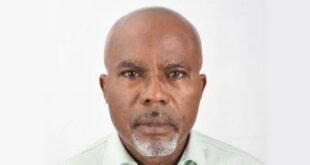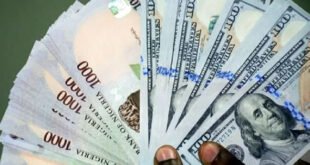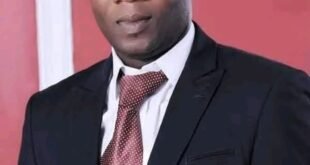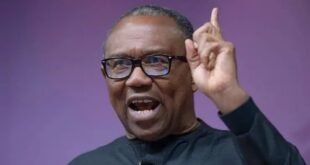His holiness, Pope Leo XIV – the first American pontiff in the history of 2000 years of the Catholic Church – was inaugurated on Sunday 18 May 2025, in the square of San Pietro, the world general quarter of the Church.
In his homily, the 267th Pope told the Congregation:
“I was chosen, without any merit, and now, with fear and tremor, I come to you as a brother who wants to be the servant of your faith and your joy.”
The observation was hitting for his humility, which recalls his predecessor, Pope Francis, whose Spartan, approach to the earth to the earth and the papacy led him to give up the traditional papal dad and the ring of the golden fisherman from one million dollars. Instead, Francis opted for a more modest gold plated version.
From the homily and from the language of the body of Pope Leo XIV – the example of Francis to wash the feet of the less privileged of the society – it is clear that the new pontiff tries to be Servus Serroum Dei, “a servant of the servants of God” and unify not only Catholics but Christians and humanity in general.
Although it is white, Pope Leo XIV, like Francis, seems determined to embrace every breed. His homily, delivered in Italian, was immediately translated into English, Spanish and Japanese. The diversity was also evident on the altar: many of the famous clergy were not white: black and brown men of every continent.
In my evaluation, this reflects the Americanness of the Pope born in Chicago. Following his Augustinian call, he left the United States in Peru – much less wealthy – to become, like St. Peter, a “fisherman of men”, striving to bring lost sheep back to the flock of God.
Later in this essay, I will compare the record of the Catholic Church with its black members, which represent about 20 percent of all Catholics all over the world – with the United States record to welcome American blacks in national leadership, even if blacks are only 14% of the population.
⸻
The creation of Pope Leo XIV
The interviews with the media with his brothers, John and Louis Prevost, reveal that Leo XIV (born Robert Prevost) had long aspirated to the priesthood:
“As a child,” they remember, “he would have draped a towel on his shoulders and pretended to preach the homilies”.
While serving in Peru, it extended its awareness in Africa. Recently in 2024, he chaired the consecration of the chapel at the International House of Agostinese theology in Nairobi, Kenya. In his invitation to President Bola Tinubu for the papal inauguration, he wrote:
“Your great nation is particularly dear to me; I served in the Apostolic Nunger in Lagos in the 80s.”
On a lighter note, the president Tinubu despite being Muslim by faith, but being of liberal mentality, he honored the Pope’s invitation to the Vatican city. And he was looking at him in his suit from Roga Savile to Saint Peter’s Square with his son Seyi in tow. I don’t know if I am the only one who noticed, but for the first time I saw a surprising similarity between father and son to the extent that it could be said that Seyi is a spitted image of his father. Perhaps President Tinubu should adorn himself in seeds more often so as not to be too stereotyped in his meaning of the dress.
In addition, the symbolism of the meeting of President Tinubu in the square of San Pietro, Peter Obi, candidate for the presidency of the Labor Party for the first time since their electoral confrontation in 2023 is noteworthy.
It reminds me how the president of the United States Donald Trump met in the same square of San Pietro with the Ukrainian president Vldomir Zelensky for the first time after their meeting not too suitable for the White House. In the same way, the vice -president of the United States J. D Vance, who seemed to have been hostile to Zelensky during the meeting of the Oval Reference Office, as a guest of the Pope during the inauguration, was also seen in a convivial position with the Ukrainian president Merculated in Saint Peter’s Square.
In light of the above, in some way, the Vatican city is rapidly acquiring the image of a paradise of diplomacy and enclave of peace without any extraordinary effort of the new Pope Leo XIV to make the Catholic Church a beacon of peace while elaborately enunciated in his inauguration speech.
⸻
Two millennia of continuity and require a reform
Ever since Jesus entrusted the church to St. Peter, Catholicism has grown over 1.4 billion of faithful (some estimates say 1.5 billion). Although often called the oldest institution in the world of the world, the doctrine and the church leadership structures have seen relatively modest reforms, despite the efforts of modernizers such as Pope Francis, who died on Easter Monday.
In the guidance almost 18 percent of humanity makes the Pope, residing in Vatican City (an enthusiastic sovereign state of Rome, in Italy), a spiritual head of a population larger than that of China (≈1.4 billion) or of India (≈1.4 billion). They were all the Catholics gathered in a territory, they would have formed the most populous nation on Earth, comparable to the total combined of the 54 countries of Africa, which is over 4 billion people.
The global context of the Church is captured in the same Catholic word, by the Greek Katholikós, which means “universal” or “all -inclusive”. The term appears in the original New Greek testament in Acts 5:11 and Acts 9:31, although subsequent translations make it simply as a “church”.
It is certainly within the Greek sense of Katholikós – “inclusive” or “universal” – that the reforms started by Pope Francis and that Pope Leo XIV seems determined to continue, are guided. The goal is to make the Church truly universal as the first advice of Nicea (325 AD), even before the era of Jesus Christ, which was acclaimed as head of the Church.
The most visible sign of reform is that the papacy is no longer the exclusive reserve of Europeans or South American; A North American now guides the Catholic Church. An American from Chicago has become Pope Leo XIV.
Few observers noticed the symbolism when the President of the United States Donald Trump released an image of artificial intelligence of himself in the papal vestments. Some critics said that Catholicism was deriding. In truth, Trump, always taking advantage of his Brinksmanship – has been sending a thin signal that a significant change was underway.
Consider the temporal sequence. After Pope Francis’ funeral on April 26, 2025, 133 cardinals of each continent entered the conclave on May 7. In just 24 hours – and only two voting rounds – they elected Robert Prevost of Chicago as Pope Leo XIV.
Politics, without a doubt, had been at stake during the funeral period. I have no concrete tests, but the image of the AI and the rapid elections speak of volumes.
Although the four largest Catholic populations in the world are in Brazil, Mexico, the Philippines and the United States, the church is growing faster in Africa and Asia. About 40 million Africans have joined the faith between 2022 and 2023. It is plausible – perhaps in our life – that an African or Asian Pope will emerge; Pope Leo XIV is still 69.
Africa already represents about 20 percent of Catholics all over the world, led by the Democratic Republic of Congo and Nigeria. Yet the continent has no decisive voice in the church leadership. Cardinal Francis Arinze della Nigeria was a strong contender in 2013, when Pope Francis was chosen; In the latest Cardinals of Conclave Peter Turkson (Ghana) and Fridolin Ambongo Besungu (DRC) were also frontal, but nobody prevailed.
The College of Cardinals now includes 29 members from 23 African countries; 18 of them are voters and all except three were appointed by Pope Francis: testimony of his influence, just like a president of the United States model the Supreme Court through the appointments. Right now, President Donald J. Trump enjoys a lever similar to Washington.
In the United States, where blacks constitute only 14 percent of the population (against 20 percent of global Catholics who are black), the majority white electorate accepted and elected a black leader. In 2008, Barack Obama – I’m from a Kenyan father – made the 44th president of America. On the contrary, the Catholic Church has yet to elect a black Pope even if blacks are 20% of the flock of 1.4 billion all over the world.
The greatest point is that politics pervades every human enterprise; As Aristotle observed, we are “political animals”. Africa, without an economic and military weight, still holds the short part of the stick. Only an unfair trade has relegated the continent to a supplier of raw materials, Africa has remained a victim while more powerful nations – such as the United States under President Trump from 20 January 2025 – have been avenged and are forcing the renegotiation. Larmatably without the type of US financial and military muzzle, Africa cannot force its exploiters to renegotiate trade with her at equitable and equitable conditions and therefore remains vulnerable.
In the same way, Africa still does not have permanent seats in the United Nations Security Council, even if 54 of the United Nations Member States are Africans.
With an American, renowned for supporting inclusiveness and fairness as Pope, a black Pope could be in preparation in the not too far future.
On the socio -economic front, can the African continental free trade area help to give the continent a better bargaining power? And would the new world commercial order be forged by President Trump open the window for Africa to get a place at the table in the nations committee?
These are the relevant questions that must be meditated by the leaders of Africa and the conscientious leaders of the nations of superpower of the world.
This assumes that there is still justice in this world.
Magnus Onyibe – Entrepreneur, public analyst, author, lawyer of democracy and development strategist; Pupil of the School of Law and Diplomacy, Tufts University; Commonwealth Institute Scholar; And the former state commissioner Delta (2003-2007): he writes from Lagos, Nigeria.
The post Catholic church, the black race, politics and the United States, of Magnus Onyibo, appeared for the first time on Theconclaveng.
 JamzNG Latest News, Gist, Entertainment in Nigeria
JamzNG Latest News, Gist, Entertainment in Nigeria









